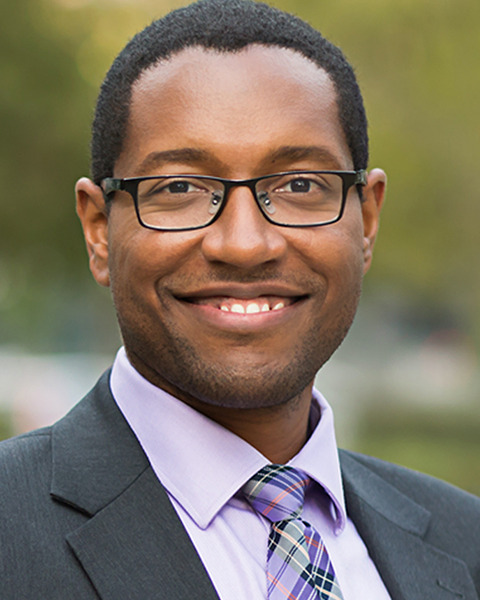Back
Introduction: Clinical trials for men with metastatic prostate cancer have supported the use of combination therapies. However, real-world utilization of doublet therapy (i.e. androgen deprivation therapy (ADT) plus a novel hormonal therapy) and geographic variation in use have not been evaluated in detail. With recent data supporting triplet regimens, we must understand what factors already impact doublet therapy utilization before further intensification. Using a national cohort of community and academic medical oncology practices, we characterized real-world utilization of doublet therapy and examined factors associated with its use, including geographic region.
Methods: Using ConcertAI RWD, clinical data of men with metastatic prostate cancer was linked with state-level measures of socioeconomic factors and healthcare resources from the Area Health Resources File. Logistic regression examined associations between clinical and community characteristics and receipt of doublet therapy (vs ADT alone) within 90 days of diagnosis; models were adjusted for clinical factors, state level factors (excluding hospital beds, poverty, and education due to collinearity), and geographic region. Odds ratios (ORs) with 95% confidence intervals were reported.
Results: A total of 1,763 men with M1 disease were eligible, with a mean age of 68.6 years at diagnosis. Nearly half (48%) lived in the Southern region, 9.3% in North East, 18.6% in West, and 23.7% in Midwest. Roughly 13.8% were Black, and 1.3% American Indian, and 1.1% Asian. One-third received ADT alone (37.8%). Regression analysis for ADT+NHT vs. ADT included 1,604 men, of which 84.6% received doublet therapy. Geographic region [vs Southern: Midwest, OR 0.6, 95% CI 0.4-0.9; Northeast, OR 0.4, 95% CI 0.2-0.7], larger state population [(log-transformed) OR 0.09, 95 % 0.02-0.3], prior surgery or radiation (vs none, OR 1.7, 95% CI 1.3-2.3), greater urologist density [(log-transformed), OR 0.1, 95% CI 0.02-0.8] and radiation oncologist density [(log-transformed), OR 12.9, 95% CI 2.8-60.2] were significantly associated with receipt of doublet therapy compared to ADT alone.
Conclusions: Doublet therapy use was impacted by geographic region and regional specialty care (i.e. urologist and radiation oncologist density), emphasizing the relationship between regional medical expertise and care implementation. As the drive to improve care grows, our study highlights how treatment remains influenced by where you live and the need for identifying actionable targets for organizational change at the regional level. SOURCE OF
Funding: ConcertAI ERACE Research Award
Moderated Poster Session
Session: MP54: Health Services Research: Practice Patterns, Quality of Life and Shared Decision Making III
MP54-05: Geographic variation in utilization of doublet therapy for metastatic prostate cancer
Sunday, April 30, 2023
9:30 AM – 11:30 AM CST
Location: S401A

Samuel L. Washington, III, MD
Assistant Professor
University of California, San Francisco
Poster Presenter(s)
Introduction: Clinical trials for men with metastatic prostate cancer have supported the use of combination therapies. However, real-world utilization of doublet therapy (i.e. androgen deprivation therapy (ADT) plus a novel hormonal therapy) and geographic variation in use have not been evaluated in detail. With recent data supporting triplet regimens, we must understand what factors already impact doublet therapy utilization before further intensification. Using a national cohort of community and academic medical oncology practices, we characterized real-world utilization of doublet therapy and examined factors associated with its use, including geographic region.
Methods: Using ConcertAI RWD, clinical data of men with metastatic prostate cancer was linked with state-level measures of socioeconomic factors and healthcare resources from the Area Health Resources File. Logistic regression examined associations between clinical and community characteristics and receipt of doublet therapy (vs ADT alone) within 90 days of diagnosis; models were adjusted for clinical factors, state level factors (excluding hospital beds, poverty, and education due to collinearity), and geographic region. Odds ratios (ORs) with 95% confidence intervals were reported.
Results: A total of 1,763 men with M1 disease were eligible, with a mean age of 68.6 years at diagnosis. Nearly half (48%) lived in the Southern region, 9.3% in North East, 18.6% in West, and 23.7% in Midwest. Roughly 13.8% were Black, and 1.3% American Indian, and 1.1% Asian. One-third received ADT alone (37.8%). Regression analysis for ADT+NHT vs. ADT included 1,604 men, of which 84.6% received doublet therapy. Geographic region [vs Southern: Midwest, OR 0.6, 95% CI 0.4-0.9; Northeast, OR 0.4, 95% CI 0.2-0.7], larger state population [(log-transformed) OR 0.09, 95 % 0.02-0.3], prior surgery or radiation (vs none, OR 1.7, 95% CI 1.3-2.3), greater urologist density [(log-transformed), OR 0.1, 95% CI 0.02-0.8] and radiation oncologist density [(log-transformed), OR 12.9, 95% CI 2.8-60.2] were significantly associated with receipt of doublet therapy compared to ADT alone.
Conclusions: Doublet therapy use was impacted by geographic region and regional specialty care (i.e. urologist and radiation oncologist density), emphasizing the relationship between regional medical expertise and care implementation. As the drive to improve care grows, our study highlights how treatment remains influenced by where you live and the need for identifying actionable targets for organizational change at the regional level. SOURCE OF
Funding: ConcertAI ERACE Research Award
